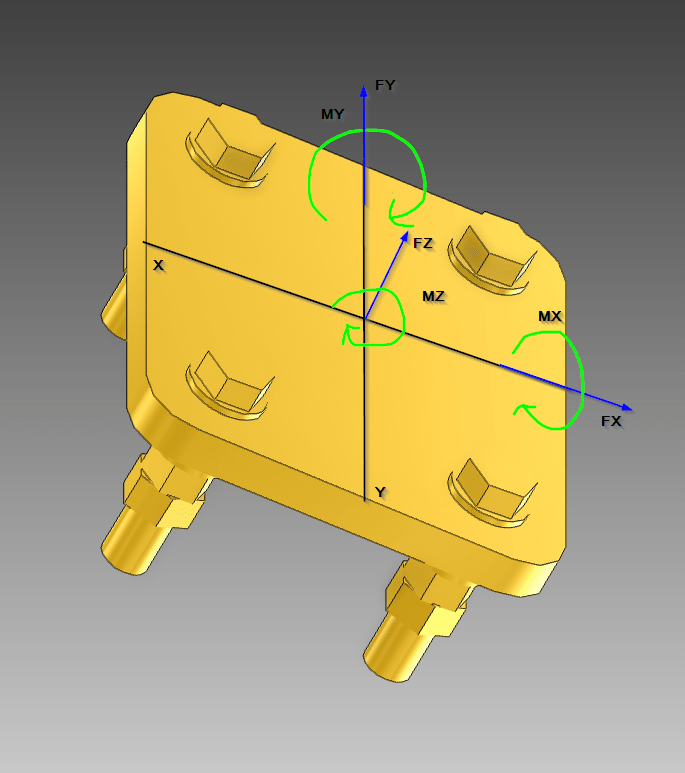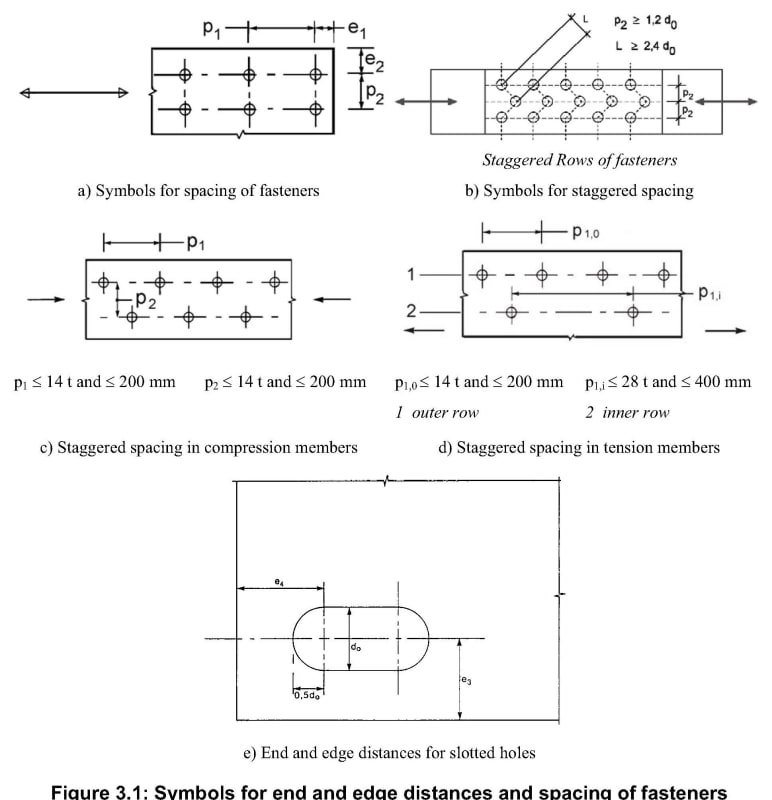Christian_S
Mechanical
Hey
I'm making a program for checking bolted endplates subjected to axial forces, shear forces, torsion and bending moments according to Eurocode 3. However I'm a bit stuck on finding the bearing resistance.
I've added a picture to make it easier to follow my explanation. Seeing as its's expected this endplate will experience shear force in x and y simultaneously, I would expect the resultant shear force to be what to check for. But in the eurocode edge distances e1 and e2 and bolt spacings p1 and p2 in bearing resistance check calculation are defined as whether they are parallell or perpendicular to the applied load, which I think is hard to define when using the resultant shear force.
My question is this; what's standard practice here?
Do I check bearing resistance in x and y direction and check against corresponding shear forces (this to me seems weird as we expect Fx and Fy to act at the same time)?
Or do I use the direction with the lowest bearing resistance against the resultant shear force (this seems very conservative, but safe)?
Or something else?

From Eurocode

I'm making a program for checking bolted endplates subjected to axial forces, shear forces, torsion and bending moments according to Eurocode 3. However I'm a bit stuck on finding the bearing resistance.
I've added a picture to make it easier to follow my explanation. Seeing as its's expected this endplate will experience shear force in x and y simultaneously, I would expect the resultant shear force to be what to check for. But in the eurocode edge distances e1 and e2 and bolt spacings p1 and p2 in bearing resistance check calculation are defined as whether they are parallell or perpendicular to the applied load, which I think is hard to define when using the resultant shear force.
My question is this; what's standard practice here?
Do I check bearing resistance in x and y direction and check against corresponding shear forces (this to me seems weird as we expect Fx and Fy to act at the same time)?
Or do I use the direction with the lowest bearing resistance against the resultant shear force (this seems very conservative, but safe)?
Or something else?

From Eurocode

